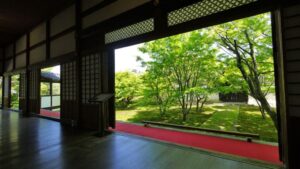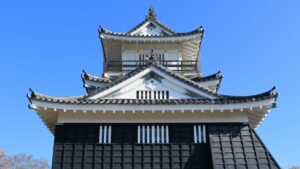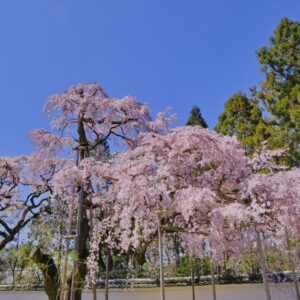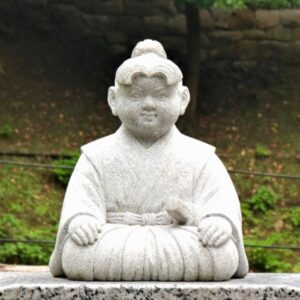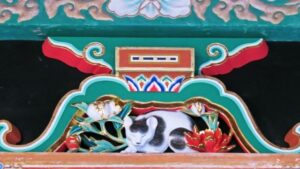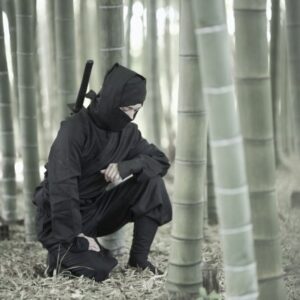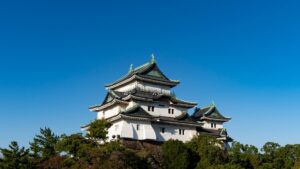Myokakuji Temple, Nobunaga's Innovative Venue for Tea Ceremonies
Oda Nobunaga held his tea ceremonies at Myokakuji Temple, his lodging during his stay in Kyoto. Here, Nobunaga and Sen-no-Rikyu met. The two innovators began to resonate with each other in their rational minds. Nobunaga appointed Rikyu as the tea master for the tea ceremony held at Myokakuji Temple in 1573. Encounter between Nobunaga and […]
Hamamatsu Castle, Ieyasu's Journey of Building a Peaceful Era
Tokugawa Ieyasu (1543-1616, 徳川家康) was freed from his hostage of Imagawa Yoshimoto (1519-1560, 今川義元) defeated at Okehazama Battle, and took a step forward as the lord of Okazaki Castle. He put down the Mikawa Ikki riot and brought stability to the Mikawa region in 1645. Following the surrender of the Imagawa clan's Sunpu Castle in […]
Daigoji Temple, Cherry Blossoms Honoring Hideyoshi's Unification of Japan
Daigoji Temple, a World Heritage Site, has been known as "Hana-no-Daigo" (Cherry Blossom Flower Daigo) since the Heian period (794-1185), and some 700 cherry blossoms are in full bloom in spring, including weeping, Someiyoshino, mountain, and double-flowered cherry trees. The temple consists of several sub-temples and gardens spreading across a vast area of Mt. Daigo […]
Okazaki Castle, Hardship Made the Man: Tokugawa Ieyasu
Tokugawa Ieyasu (1543-1616, 徳川家康) was separated from his mother at the age of 3, became a hostage of Oda Nobuhide, father of Oda Nobunaga (1534-1582, 織田信長) at the age of 6, lost his father at the age of 8, then became a hostage of the Imagawa Yoshimoto (1519-1560, 今川義元). In total, he spent about 14 years […]
Nikko Toshogu Shrine, Seeking a Peaceful World Even After Death
Nikko Toshogu Shrine enshrines the spirit of Tokugawa Ieyasu, who laid the foundation for a peaceful era that lasted for 260 years. After settling the turbulent era, Ieyasu's ambition was to secure lasting prosperity and national peace. He faced many adversities in his life: fourteen-year hostage and Ikko-riot of the Jodo Shinsu sect of Buddhism […]
Honpoji Temple, The Precursor of the Rimpa School, Hon'ami Koetsu's World of Faith and Beauty
The tender green of the trees from outside is reflected on the polished stone floor at Honpoji Temple in Kyoto. The colors shimmer on the black surface and create a tranquil atmosphere. It’s incredibly beautiful. Honpoji Temple stands as one of the temples within the Nichiren Sect of Buddhism, established by Priest Nisshin during the […]
Ninjas, Greatly Active regardless Day and Night on the Front Lines during the Warring State Period
Ninjas had mastered superhuman ninjutsu, the art of warfare. In times of peace, they would infiltrate enemy territory to gather information and engage in intrigue and reconnaissance, and in times of war, they would infiltrate enemy lines to commit arson and assassination. For the warlords of the Warring States Period (1467-1590), Ninjas were indispensable for […]
Hikone Castle, The life of Ii Naomasa, a Brave Warrior with Strong Diplomatic Skills
Hikone Castle, situated atop Mount Kinko along the shore of Lake Biwa, retains its stunning three-story structure, adorned with its white stucco exterior walls as it was in the past. The castle tower, a national treasure, showcases an elegant and rhythmical architectural style adorned with three types of gables: Kirizuma, Kara-hafu, and Iriomoya. Adding to […]
Wakayama Castle, A Great Lord, Yorinobu, laid the foundation of the Kishu's prosperity
In 1619, three years after Tokugawa Ieyasu's passing, his 10th son, Tokugawa Yorinobu (1602-1671, 徳川頼宣), received 555,000 koku, equivalent to the rice crop of yield (*) and established the Kishu domain (present-day Wakayama and southern Mie Prefectures). Wakayama Castle, the Kishu Tokugawa Family's residence, was extended and constructed at the mouth of the Kino River, […]
Odawara Castle: Hojo Clan's Independence from Shogunate and People-Centered Policy
A remarkable Hojo clan, a pioneering and the final force of Sengoku Daimyo, a territorial lord in the Warring States Period, who reigned supreme in the Kanto region for a century-spanning five generations. Their unwavering ambition was to be independent of the vested interest of the Muromachi Shogunate (1336-1573) and to safeguard the livelihoods and […]

